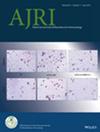Prognostic Impact of Pregnancy-Associated Plasma Protein-A (PAPP-A) for Gestational Diabetes Mellitus (GDM): An Updated Systematic Review and Meta-Analysis of More Than 90 000 Pregnancies
Abstract
Objective
Gestational diabetes mellitus (GDM) constitutes a significant health concern during pregnancy, warranting a thorough investigation into potential prognostic markers. Pregnancy-associated plasma protein-A (PAPP-A), which is present at high levels during pregnancy, exhibits altered concentrations even before the clinical diagnosis of GDM, highlighting its potential as an early biomarker for this condition. This systematic review and meta-analysis aimed to review and synthesize the latest evidence comprehensively to explore the correlation between maternal PAPP-A levels and the development of GDM, drawing from the most recent publications available.
Methods
PubMed, EMBASE, and Cochrane CENTRAL were searched systematically up to June 2, 2024. Cohort and case-control studies reporting PAPP-A levels in GDM and non-GDM women with singleton pregnancy were eligible for inclusion. The quality of studies was measured using the Newcastle-Ottawa scale (NOS). Standardized mean differences (SMDs) of PAPP-A levels between GDM and non-GDM, and odds ratios (ORs) of the association between PAPP-A and GDM were pooled, with heterogeneity assessed using the Cochran Q test and I2 statistic. Sensitivity analysis was employed (PROSPERO ID: CRD42024580169).
Results
Nineteen studies involving 92 200 pregnant women were included in the systematic review and meta-analysis. The gestational age at sampling varied from 10 to 14 weeks. Meta-analysis revealed a significantly lower PAPP-A level among women with GDM compared with those without (pooled SMD = −0.31, 95% CI: −0.56 to −0.06). Furthermore, meta-analysis revealed that women with a low PAPP-A level had a significantly higher risk of developing GDM (pooled OR = 1.75, 95% CI: 1.45–2.11). Despite observed publication bias, sensitivity analysis affirmed the robustness of the results.
Conclusions
This updated systematic review and meta-analysis underscored the prognostic significance of maternal PAPP-A levels with respect to the development of GDM. Low PAPP-A level is associated with an increased risk of GDM. These findings advocate for the inclusion of PAPP-A assessment in the clinical evaluation of GDM risk.


 求助内容:
求助内容: 应助结果提醒方式:
应助结果提醒方式:


